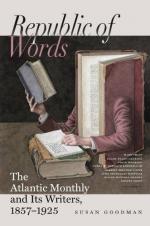METEOROLOGY.
A glance at the science.
The purpose of this article is to present, in a brief and simple manner, the leading principles on which the science of Meteorology is founded,—rather, however, in the spirit of an inquirer than of a teacher. For, notwithstanding the rapid progress it has made within the last thirty years, it is far from having the authority of an exact science; many of its phenomena are as yet inexplicable, and many differences of opinion among the learned remain unreconciled on points at first sight apparently easy to be settled.
Meteorology has advanced very far beyond its original limits. Spherical vapor and atmospheric space give but a faint idea of its range. We find it a leading science in Physics, and having intimate relations with heat, light, electricity, magnetism, winds, water, vegetation, geological changes, optical effects, pneumatics, geography,—and with climate, controlling the pursuits and affecting the character of the human race. It is so intimately blended, indeed, with the other matters here named, as scarcely to have any positive boundary of its own; and its vista seems ever lengthening, as we proceed.
Without dwelling upon the numerous consequences which flow from meteorological influences, let us see what is properly included under the subject of Meteorology. And first, of the Atmosphere.
This is a gaseous, vapor-bearing, elastic fluid, surrounding the earth. Its volume is estimated at 1/29th, and its weight at about 43/1000ths, that of the globe. It is composed of 21 parts in weight of Oxygen and 77 of Nitrogen, with a little Carbonic Acid, Aqueous Vapor, and a trace of Carburetted Hydrogen. There are numerous well-known calculations of the proportions of the various constituents of the atmosphere, which we owe to Priestley, Dalton, Black, Cavendish, Liebig, and others; but that given by Professor Ansted is sufficiently simple and intelligible. In 10 volumes or parts of it, he gives to
Oxygen, the great supporter of life 2.100
Nitrogen, (not condensible under 50
atmospheres, and not respirable or
combustible,) 7.750
Aqueous Vapor .l42
Carbonic Acid .004
Carburetted Hydrogen .004
______
10.000
and he adds a trace of Ammoniacal Vapor. It is usual to state the proportions of air as being 1 Oxygen to 4 Nitrogen.
It is a curious fact, that, while there are six varieties of compounds of nitrogen and oxygen, but one of these is fitted to sustain life, and that is our atmosphere.
It is well enough to note, that, when we use the word volume or measure, in speaking of the atmosphere or any gaseous body, we adopt the theory of Gay-Lussac, who discovered that gases unite with each other in definite proportions whenever they enter into combination. This theory led to important results; for by knowing the elements of a compound gas, we easily determine its specific gravity.




